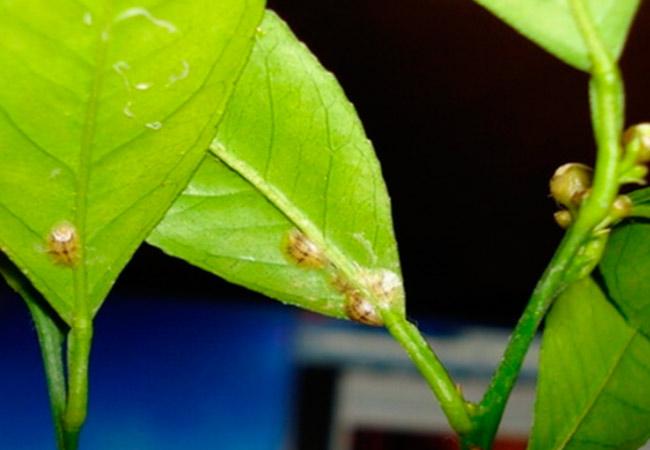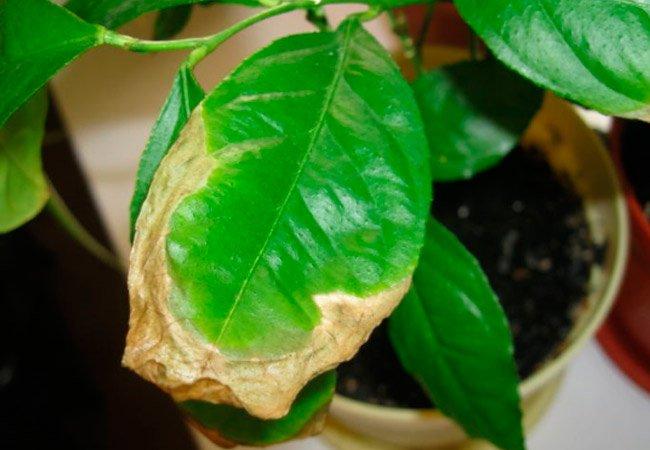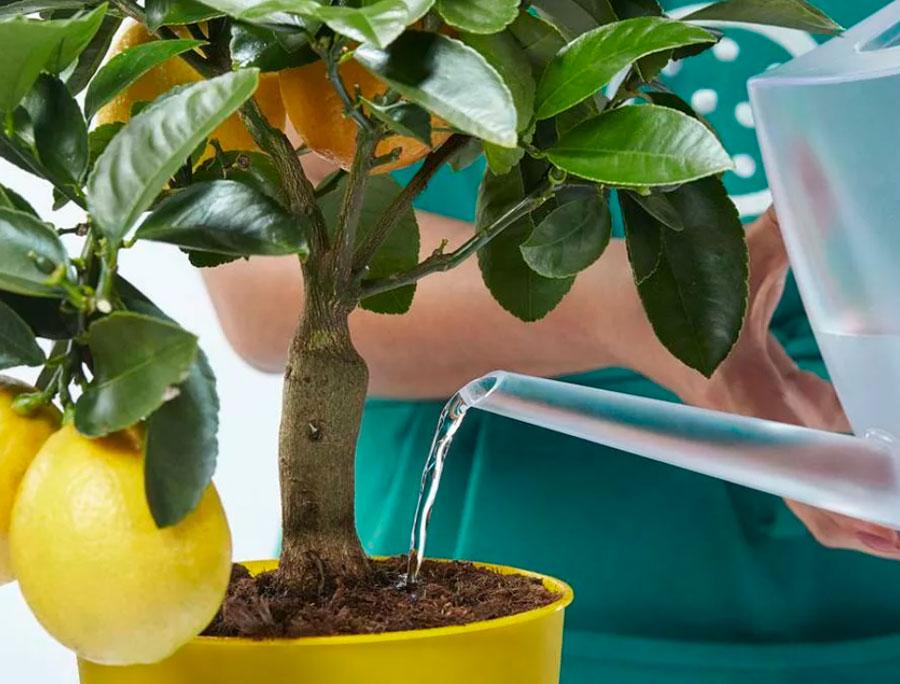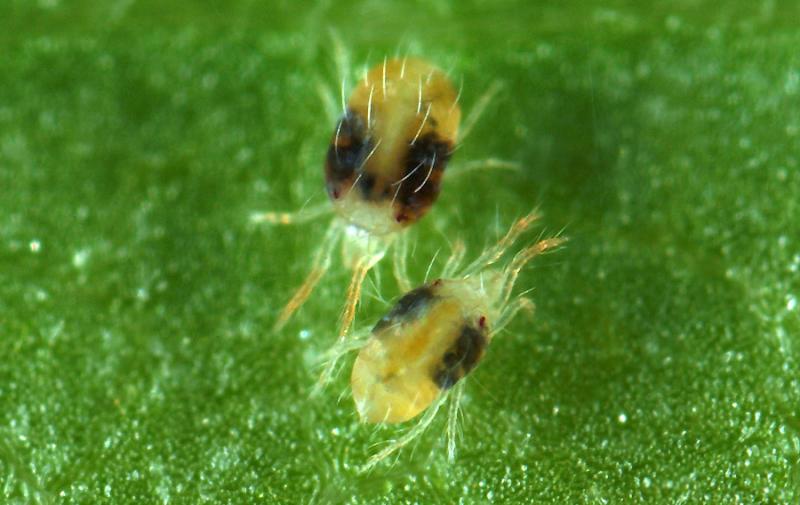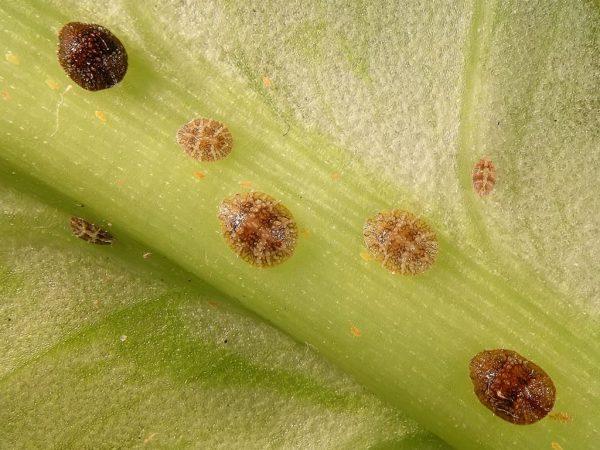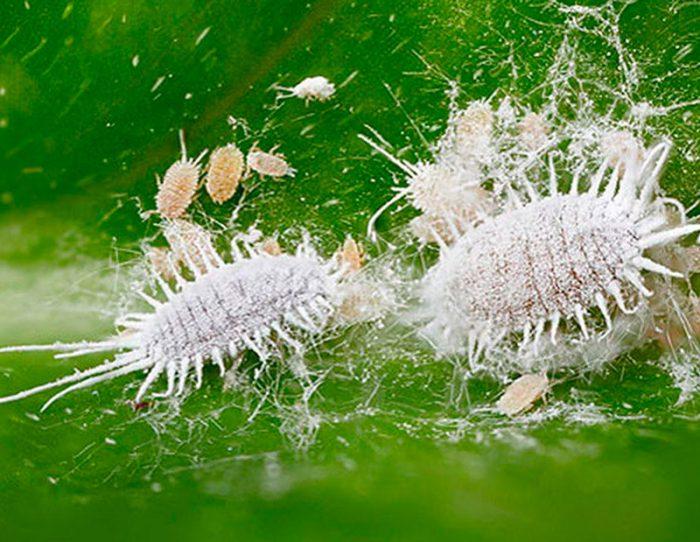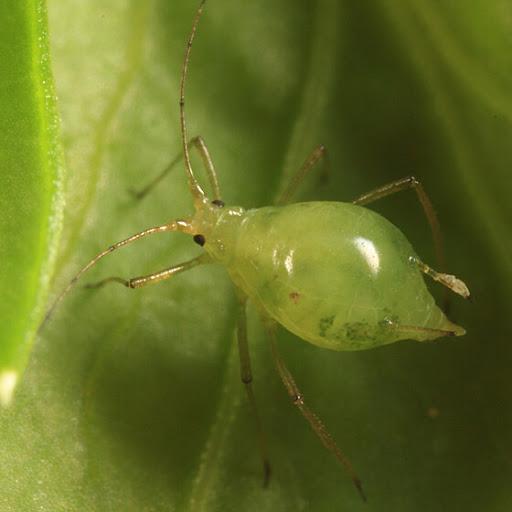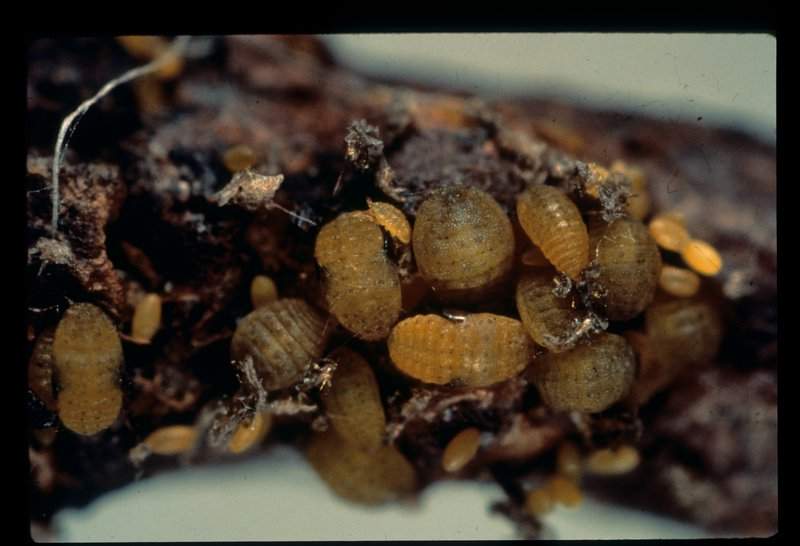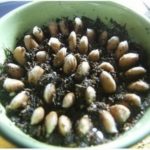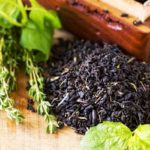The lemon tree is susceptible to various infectious, viral or fungal diseases, like any plant. Diseases that occur in homemade lemons are always reflected in its appearance, the condition of the fruits, young shoots and leaves. Timely detection of the problem and assistance to the plant will help prevent infection of the entire tree and even save it from death.
Lemon diseases and methods of their treatment
The first symptoms of the disease are easy to detect if you monitor the condition of the plant daily during cultivation. Compliance with simple rules of care and maintenance, and preventive measures will increase the durability of the tree.
Sheet mosaic
This is a dangerous viral disease that is transmitted to neighboring plants. Appears on the leaves of the lemon tree in the form of spots, mosaics, and streaks from light to dark shades. At the same time, growth noticeably slows down, and the leaves gradually acquire a pale color, turn white, lose their shape, and become lethargic.
Leaf mosaic cannot be treated. To reduce the symptoms of the disease, it is recommended to feed the plant with fertilizer as a preventive measure and to quarantine it from other flowers in the house.
Important! If fertilizing does not help, then the indoor lemon must be destroyed.
Citrus cancer
It is not difficult to identify cancer on homemade lemons: brown spots appear on the leaves and fruits. In the advanced form of the disease, young leaves do not have time to grow, as they become deformed and take on an ugly shape. The fruit ovaries wrinkle and stop developing.
There is no cure for citrus cancer. In order to prevent and prevent the disease, lemon is sprayed with liquid copper fungicide. It is best to carry out this procedure in the spring, when the plant is actively growing.
Tristeza
The occurrence of the viral disease tristesis is caused by weak immunity. The main symptom is the falling of all the foliage. Then the trunk and young shoots become covered with brown spots and gradually die off. Tristeza cannot be cured, but can be transmitted from an infected plant to a healthy one. Therefore, when the first signs of disease are detected, the tree should be destroyed.
Important! Some varieties of homemade lemons carry the disease without getting sick from it themselves.A cutting cut from a virus carrier will destroy a healthy plant.
Gommoz
Gommosis disease begins in the lower part of the trunk, then gradually rises up and descends into the root system. How it manifests itself:
- gummose bags are formed - these are swellings under the bark, in which gum of a brown or yellow hue accumulates over time;
- then these areas crack and the gum comes out, hardening in the air;
- Characteristic wounds appear on the trunk of the plant, and the leaves gradually fall off.
In its advanced form, gommosis affects young leaves and fruits of the tree. Brown spots appear on the surface, gradually increasing in size. At the same time, the lemon continues to bear fruit, but the fruits lose their taste properties. They become small, the skin darkens, the flesh inside rots and emits an unpleasant odor. It is possible to treat a plant for gommosis, but this is a long process. To do this, cut out all areas of the affected bark and carefully clear the areas of gum. The wounds are treated with a 3% solution of copper sulfate, then Bordeaux paste is applied (copper sulfate, quicklime and water mixed in a ratio of 1:2:12).
Anthracnose
The disease occurs due to infection by ascomycete fungi. Symptoms appear as brown, brown or whitish spots on the surface of the leaf blade. A characteristic feature of the spots is the presence of a dark rim that grows to the sides and merges with others.
Reasons or why anthracnose occurs:
- increased soil or air humidity;
- lack of potassium or phosphorus in the soil (manifests itself in the form of rust on the leaves).
At an early stage, antifungal drugs are used to treat lemon: Cumulus DF, Fitosporin, colloidal sulfur, 1% solution of Bordeaux mixture.
Scab
It is very easy to distinguish scab; in appearance it resembles raised warts. First, parts of the plant become covered with a yellow crust and sores, irregularly shaped spots appear, and the skin of the fruit peels off. Over time, the affected leaves die. To combat scab, remove the affected areas of the plant and treat it with one of the following: 1% solution of Bordeaux mixture, copper sulfate, Strobilin.
Melseko
Melseco is an infectious disease that cannot be cured. After infection, the plant begins to dry out from the tips of the branches, a red tint appears on the cuts, and the leaves fall off en masse. Cause of infection: lack of artificial or solar lighting in the room during the winter.
Root rot
This is a fungal disease that appears at the base of the plant. The trunk darkens, then the infection descends into the roots and affects the entire root. In this case, complete fall of all leaves and death of citrus are observed. Reason: waterlogging of the soil, stagnation of water in the pot.
To treat root rot, carry out the following steps:
- take the lemon tree out of the pot and inspect the root system;
- if damaged, dark, soft or moldy roots are found, cut them with a sharp knife;
- the cut point is crushed with previously crushed charcoal;
- transplanted into another container with fresh, dry soil.
The transplanted tree is not watered for two weeks. This will help avoid re-infection.
Plant pests and ways to combat them
Pests that are dangerous to homemade lemons cause no less damage to the plant than fungal and viral diseases. Both chemicals and folk remedies are used to combat it.
Spider mite
If you find a thin cobweb on the leaves of a lemon, it means that the plant has been attacked by a spider mite.It is not possible to see it with the naked eye due to its small size. The arachnid insect feeds on tree sap. Because of this, the leaves begin to turn yellow over time.
Important! The cause is insufficient humidity in the room.
To combat spider parasites, use:
- acaricidal chemicals: Actellik, Fitoverm, Neoron, Flumite;
- folk remedies for spraying: infusion of garlic or onion, soap solution.
They are also treated three times with a 1% boric acid solution, with an interval of 5-7 days.
Shchitovka
Lemon scale infestation can be easily identified by the presence of sticky leaves and black spots on them. Microscopic parasites settle on the reverse side of the leaves, and bumps form on the surface. The larvae, which hatch from eggs laid by the female, quickly spread throughout the plant.
Adult scale insects are covered with a special shield that protects them from insecticides. Therefore, they are removed from the plant manually. Using a soap solution and a cotton swab, wipe the surface of the leaf plate on both sides and the stem.
Then the young larvae are killed. For this purpose, insecticides such as Bankol, Inta-Vir, Aktellik, Aktara are used. After a week, it is recommended to repeat the treatment to avoid re-infection.
Chervetsy
The mealybug is visible on the plant due to its white color and powdery coating on the back. These are sucking small insects that infect young tree shoots, leaves, and ovaries. As a result, it weakens and withers.
At the early stage of infection, when there are only a small number of pests, traditional methods are used:
- A cotton swab is soaked in a soapy solution and the leaves and trunk are wiped.
- Spray 3-4 times a day with tobacco infusion, cyclamen decoction, garlic infusion or calendula tincture.
It is not possible to get rid of parasites in an advanced form using folk remedies. For this purpose, chemical agents such as Confidor, Mospilan, Ankara, Calypso are used.
Common aphid
The young leaves and shoots of the lemon tree are loved by the common aphid. An adult pest has wings, with which it flies, and is light green in color, so it is clearly visible on the plant. First, it sucks the juice from the bottom of the leaf, then moves to the outer surface. At the sites of infection, sticky drops appear, which gradually cover the entire surface, the leaves curl and gradually dry out.
If the entire lemon tree or most of it is already infected, then chemical agents are used, since traditional methods are not very effective, for example:
- Karbofos;
- Aktofit;
- Inta-Vir;
- Commander.
If the damage is small, the branch along with the aphids should be cut off and destroyed.
Root aphid
This pest is detected when a tree is transplanted into a new pot or by external signs. The plant becomes lethargic, yellow spots appear on the lemon leaves, and growth slows down. Root aphids are white in color and parasitize in the soil, damaging young suction roots.
To get rid of this type of aphid:
- take the lemon out of the pot and inspect the root system;
- cut off damaged roots and carefully wash under running water;
- then dipped in an insecticide solution (for example, potassium permanganate) for 10 minutes.
The lemon tree is transplanted into another pot with a new substrate. The old pot must be disinfected and the soil thrown away.
Prevention measures
Timely preventive measures will help prevent infection of the lemon tree by bacteria and pests.
What measures to take:
- To kill the larvae, the soil is disinfected. To do this, steam the substrate at a very high temperature: +80…+85 °C for 25-35 minutes.
- Quarantine will help prevent bacterial and viral infections. The new purchased flower is placed away from the others and observed for two weeks.
- They create optimal conditions for growth: air temperature - from +15...+25 ° C, humidity - 75-85%.
- Once a month, irrigation is done with a soap solution.
- For irrigation, water is used with the addition of Fitosporin, a biological fungicide that feeds the plant.
The use of special complex fertilizers will help strengthen the immunity of homemade lemons and make them resistant to diseases.
The citrus tree is susceptible to attack by parasites and fungal and viral diseases. The cause may be a violation of growing conditions or infection from other plants. To avoid the death of the tree, regular preventive measures, fertilizing, spraying and inspection of homemade lemons are carried out.

